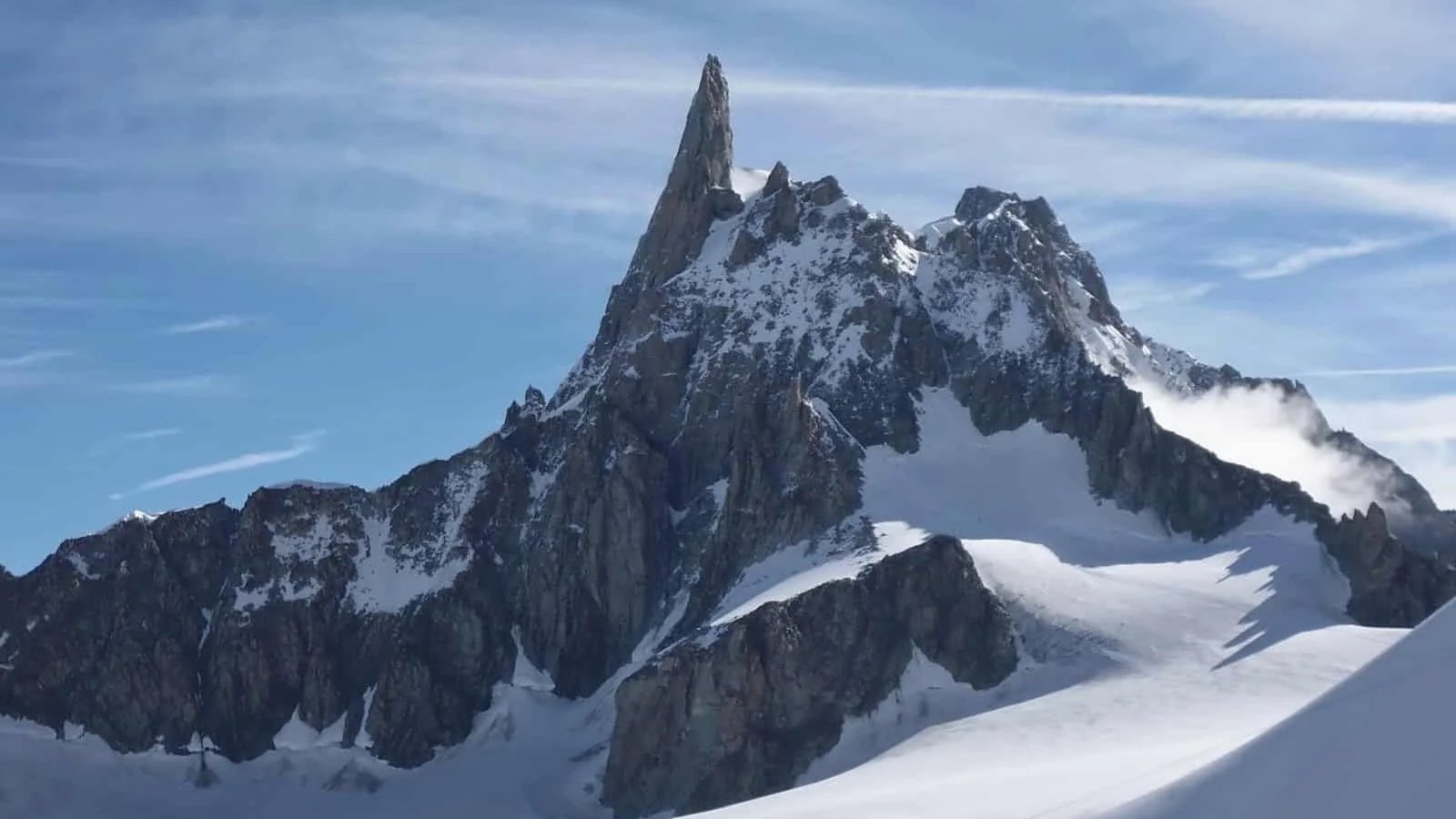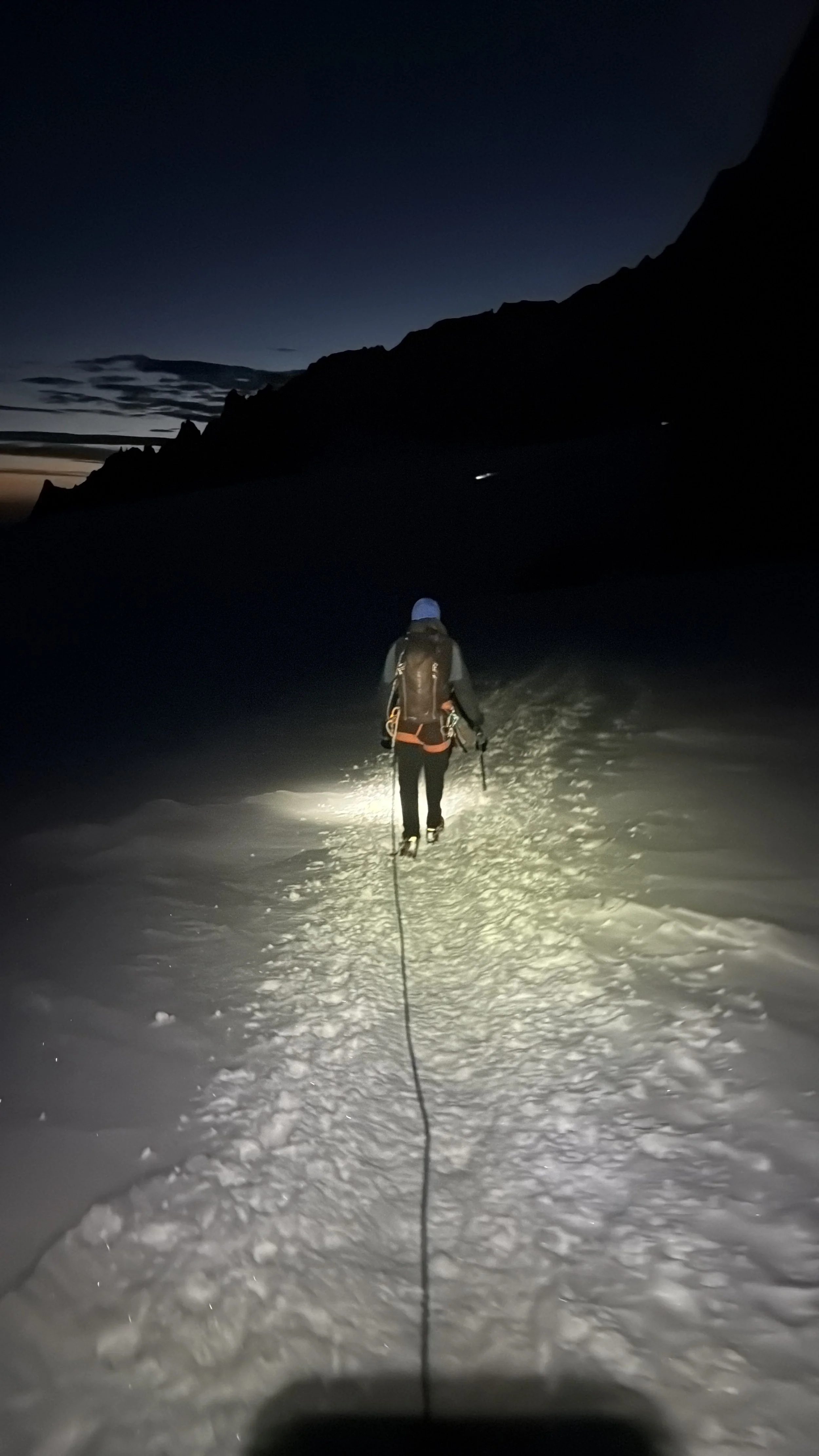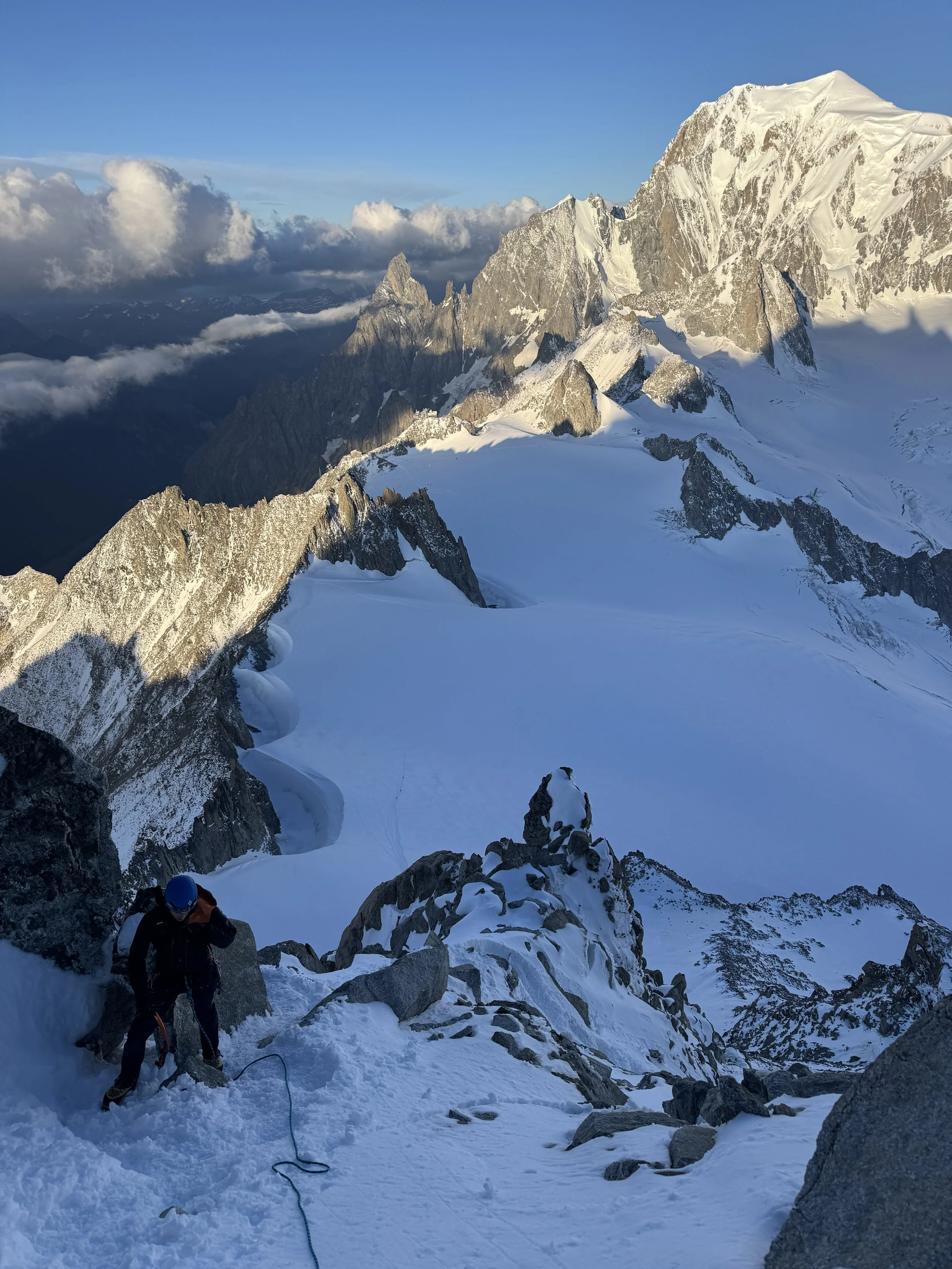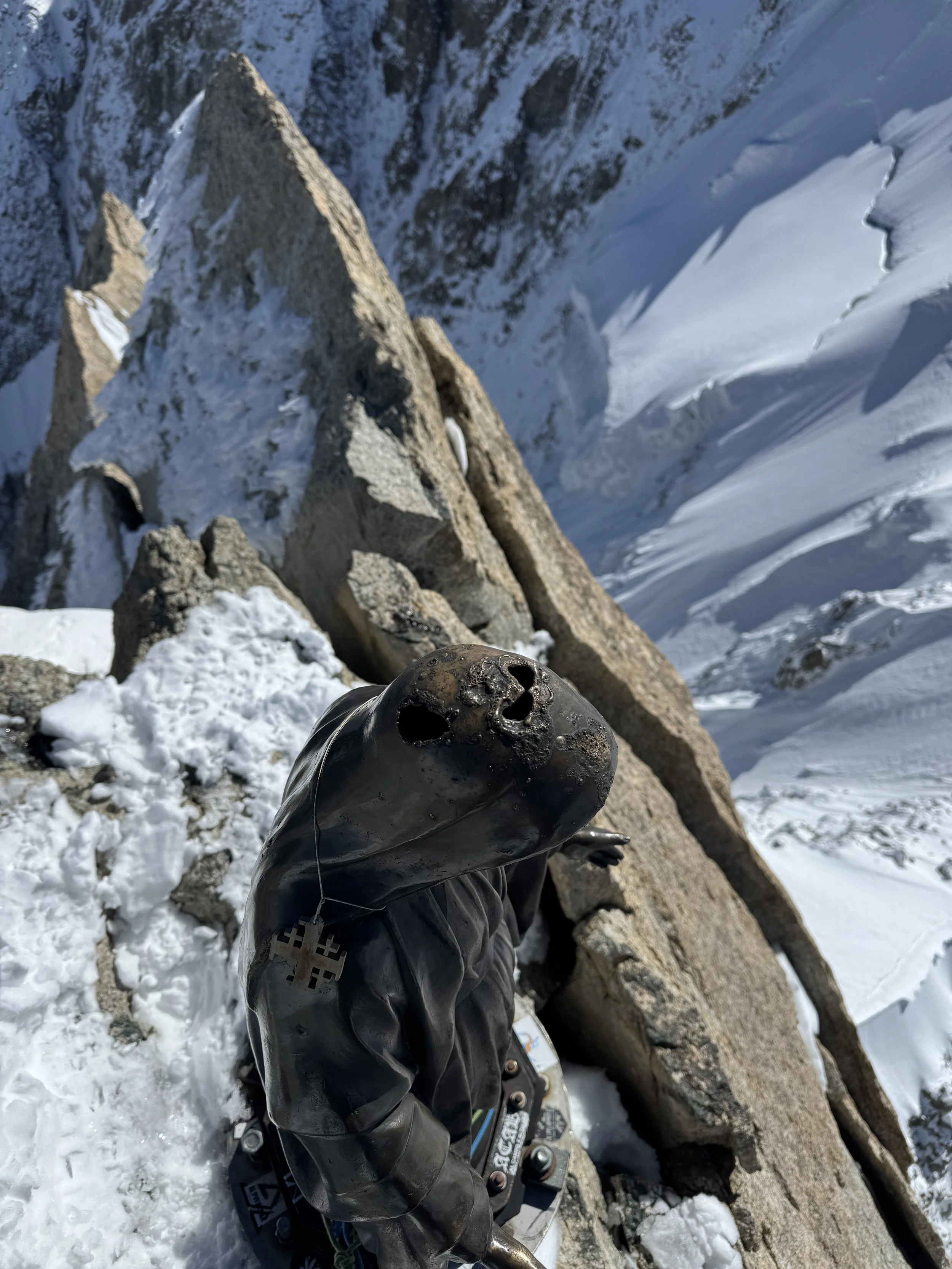Dent Du Géant - Some history and beta.
Le Dent du Géant
“Iconic” seems to be a ubiquitous descriptor for any peak on the Mont Blanc massif, but this one is undoubtedly hard to miss.
“The Giants Tooth” sticks up like a lower canine on the western end of the Rochefort Ridge.
On July 28, 1882, renowned mountain guide Jean Joseph Maquignaz, accompanied by his son Baptiste and nephew Daniel, completed the first ascent of Pointe Sella (4,009 m) via its formidable south-west face. Over the course of four days, the team installed iron stanchions and fixed ropes along the route—later known as Sella’s staircase. These efforts not only ensured their own success but also enabled them to guide a second party to the summit the following day, consisting of Alessandro, Alfonso, Corradino, and Gaudenzio Sella.
Just a few weeks later, on August 20, 1882, British alpinist W.W. Graham, together with guides August Cupelin and Alphonse Payot, repeated the ascent of Pointe Sella using the Maquignaz-installed fixed ropes. During the climb, Graham noted a small but meaningful detail: the letter ”M” had been carved into a rock step—presumably by one of the Maquignazs as a subtle signature of their achievement.
From the summit of Pointe Sella, Graham’s team descended approximately 12 meteres into a narrow col before continuing their ascent to a slightly higher, previously unclimbed peak to the northeast. This summit, reaching 4,013 meters, would later be name Pointe Graham in recognition of the accomplishment.
The difficulty of the normal route—also the line of the first ascent—is only 5.9. However, the path is equipped with thick fixed ropes to ease the climb. Given how popular the peak is, these ropes help prevent bottlenecks on the route. This isn’t a modern addition, though; in the mid-1900s, local guides carried a 12-meter wooden pole up the mountain, which climbers used to bypass the 5.9 crux sections with ease.
On quieter days, if you bring a few cams, climbing the 5.9 sections without using the fixed lines offers enjoyable and well-protected rock climbing.
Today, an iron Madonna is bolted to the higher summit—her skull pierced with holes from repeated lightning strikes. A powerful reminder that the high peaks of the Alps are no place to be caught in a storm.
Early morning track to the Dent du Géant
From the Torino Hut, the day should take between 8 and 10 hours, depending on your fitness level and how crowded the route is. I recommend leaving the hut around 4:00 a.m. on busy days and 5:00 a.m. on quieter ones. Keep in mind that you’ll need to reverse snow slopes on the way back, and descending later in the day increases the risk of falling rocks or soft, unstable snow.
From the hut, head directly toward the Géant, aiming for the base of a 70-meter couloir. If the couloir isn't filled with snow, the risk of rockfall is high. In that case, bypass it by climbing the rock on climber's left. From there, follow a meandering path up the easy mixed buttress, passing a couple of fixed lines and the occasional bolt. It should take approximately 2 hours to reach the base of the route.
-Ascending the lower mixed buttress - The Torino hut can be seen in the back round.
Once you’ve arrived at the base of the Dent du Géant, you’ll find the start of the climb marked by some traversing fixed lines, which are accessed via a short, easy downclimb.
Each belay on the route is fixed in some form, and there are multiple options for how to break up the pitches. On busy days, it’s good etiquette to be courteous and pass slower parties by aiming for higher belay stations. Once you're on route, it’s hard to get lost—just follow over a century’s worth of crampon scratches and fixed lines up to the first summit.
-Looking down the normal route on the Dent du Géant
From there, downclimb a fixed line for about two body lengths, then scramble to the higher summit, where you can take a photo with the iconic summit Madonna.
To descend, retrace your steps along the ridge and look down and left of the lower summit for some obvious bolt anchors. You can descend using six 20–25 meter rappels or three 50-meter rappels to reach the ground. The rappel stations are well-placed and clearly marked, with small plaques indicating the length of each rappel.
-The lightning scarred summit Madonna
Recommended Gear for the Route:
Packing light but smart is key for this climb. Here’s what you should bring:
1 lightweight ice axe – Ideal for early morning snow slopes and added security on icy sections.
Crampons – Essential for hard snow and mixed terrain. Make sure they're compatible with your boots.
50-meter rope – A single rope is sufficient for both the climb and rappels.
4–6 cams (sizes 0.4 to 1) – Useful for supplemental protection on sections without fixed gear.
6–8 quickdraws – A mix of alpine and standard draws will help manage rope drag on wandering pitches.
Optional but helpful: a few slings for extending placements or building anchors, especially if you're passing other parties.
-Airy rappelling on the Dent du Géant







